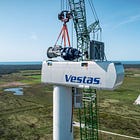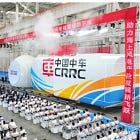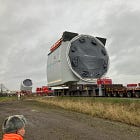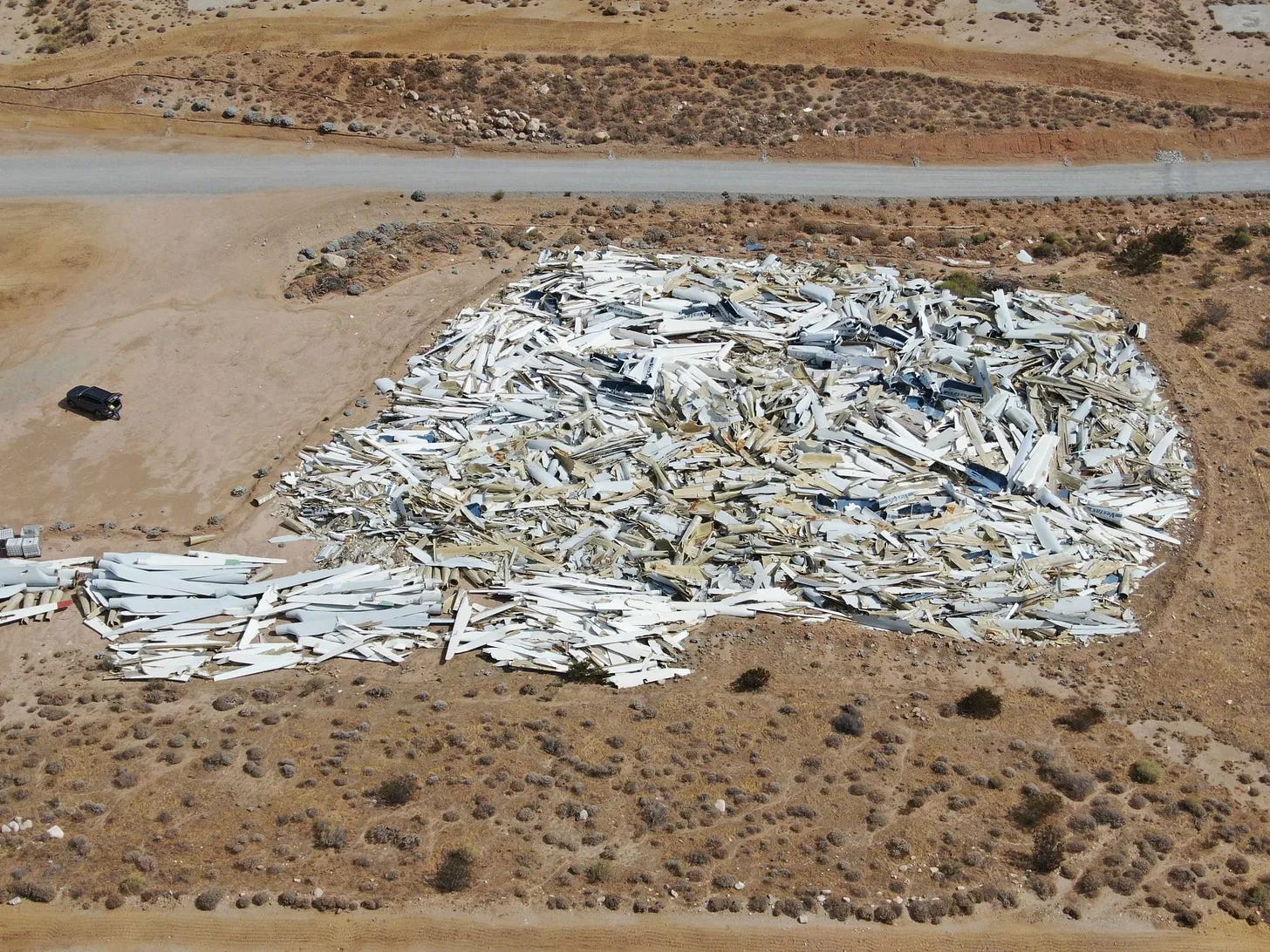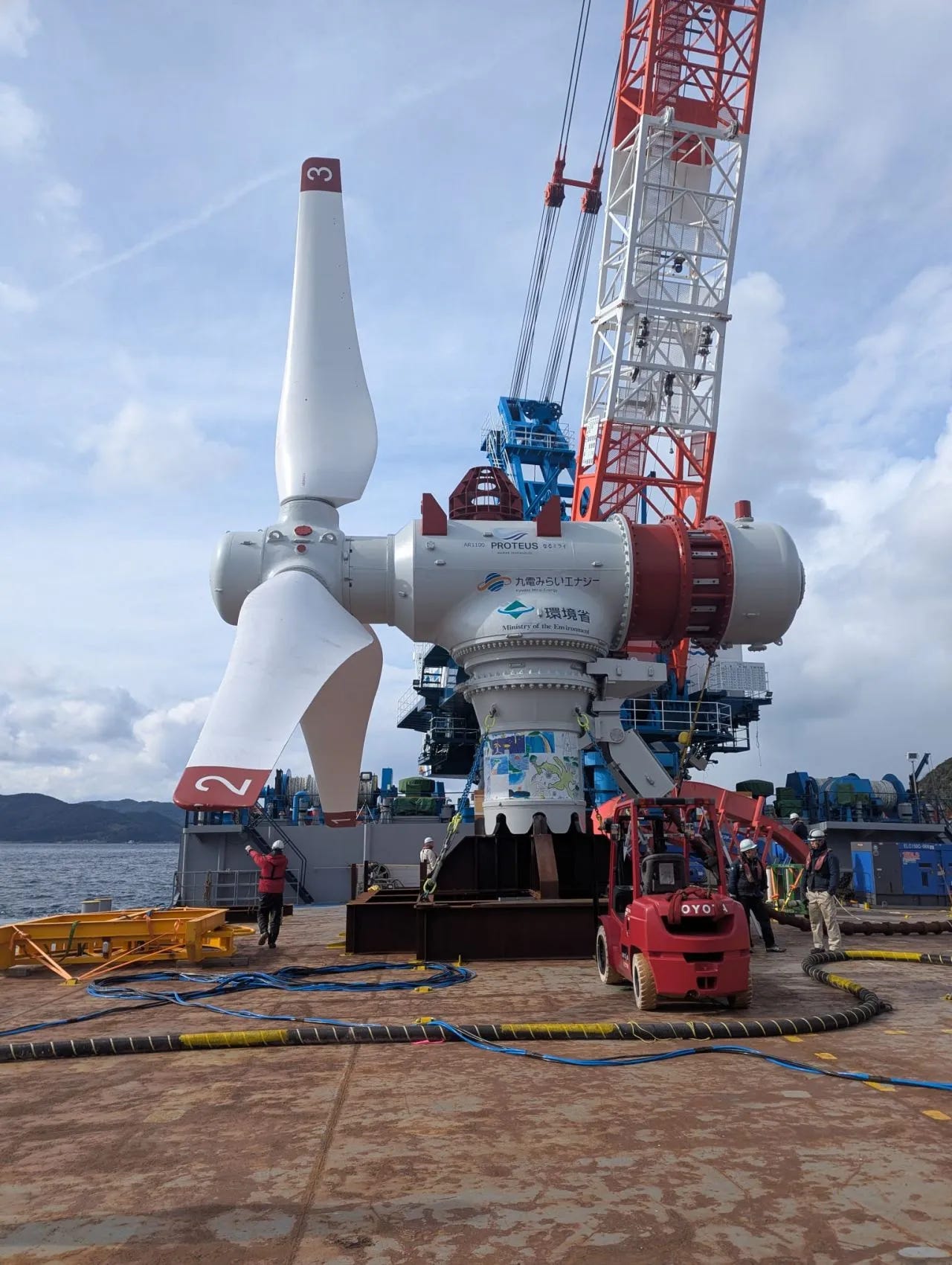Windletter #103 - The best wind turbines and innovations of 2024
Also: updates on the SG21.5-276, decommissioning of 1,500 blades, a 1.1 MW tidal turbine, and more.
Hello everyone and welcome to a new issue of Windletter. I'm Sergio Fernández Munguía (@Sergio_FerMun) and here we discuss the latest news in the wind power sector from a different perspective. If you're not subscribed to the newsletter, you can do so here.
Windletter is sponsored by:
🔹 Tetrace. Specialized services in operation and maintenance, engineering, supervision, inspection, technical assistance, and distribution of spare parts in the wind sector. More information here.
🔹 RenerCycle. Development and commercialization of solutions and specialized services in the circular economy for renewable energies, including comprehensive dismantling of wind farms and waste management, refurbishment and sale of components and wind turbines, management and recycling of blades and others. More information here.
Windletter está disponible en español aquí
The most-read articles from the last edition were: the catalog of Siemens Energy’s 72.5 kV GIS Clean Air solution, the preview of Brinckmann’s report, and the video of Doosan Enerbility’s 10 MW wind turbine.
Additionally, in the last edition, we conducted a small survey to gather your opinion on the 6% market share forecasted by Brinckmann for SGRE in the 2024-2034 period. 90% of you believe it will be higher.
Now, let’s dive into this week’s news.
🏆 The best wind turbines and innovations of 2024
Every year, the specialized media Windpower Monthly presents the prestigious "Wind Turbines of the Year" awards, considered among the most recognized in the industry. These awards provide a global perspective on the trends shaping the sector, from new models to the latest technological innovations.
Although the detailed reports and in-depth insights are behind a paywall, thanks to award recipients sharing their achievements on social media and industry sources, last year we were able to review the winners in the different categories.
This year, we will do the same in an awards edition with a notable presence of Chinese OEMs, which have been far more active in launching new products and innovations compared to their Western counterparts.
The categories are as follows:
Onshore wind turbines <5.90 MW
Onshore wind turbines >5.91 MW
Offshore wind turbines
Drivetrains
Blades
Innovations
Windpower Monthly has once again increased the rated power limit for the onshore categories, raising it from 5.6 MW last year, driven by the continuous growth in turbine capacity and rotor sizes.
As a curiosity, when these awards were first held in 2013, the onshore category was divided at the 2 MW threshold, and the winner in the <2 MW segment was the Gamesa G58 850 kW.
Before moving on to the 2024 winners, it’s worth taking a look at the 2013 awardees to see how much the industry has evolved.
🌳 Onshore wind turbines <5.90 MW
🥇 Suzlon 3.XMW S144 – The "one-of-a-kind" wind turbine with a lattice tower, sold exclusively in India, and performing remarkably well in the market.
🥈 Goldwind GWH204-5.X – A low-power-density turbine optimized for ultra-low wind conditions. Notably, Goldwind also introduced a GWH204-4.X at China Wind Power.
🥉 GE Vernova 3.6-154 – GE Vernova's high-capacity factor turbine tailored for the U.S. market. The first prototype is already installed, and the first commercial machines are being deployed.
🏗️ Onshore wind turbines >5.91 MW
🥇 Sany SI-270150 15MW – Dubbed the world’s largest onshore wind turbine, featuring flexible power between 12.X–16.X MW. Announcement.
🥈 Enercon E-175 EP5 E1 – Enercon’s largest onshore turbine and, along with Nordex’s N175, one of the largest rotors among Western manufacturers. A new version with an upgraded generator is already in development. Announcement.
🥉 Nordex N175/6.X – One of the largest rotors among Western manufacturers, alongside Enercon’s E-175. Well-received in the market, with a prototype currently being installed with a 179m tower.
🌊 Offshore wind turbines
🥇 Mingyang MySE1.6(T) OceanX 16.6MW – Undoubtedly the announcement of the year, Mingyang’s dual-rotor floating platform, already undergoing testing in China. I’m still unsure if it should be considered a single turbine and if it truly fits this category. Announcement.
🥇 Dongfang H26-312-S 20-26MW – Presented at WindEnergy Hamburg as a 25 MW model, later upgraded to 26 MW. With a 312-meter rotor (153-meter blades), it is, as far as I remember, the largest rotor ever introduced in the industry.
🥉 Siemens Gamesa SG 14-236 DD 14.0MW – Siemens Gamesa’s offshore flagship, already being installed in multiple wind farms worldwide.
⚙️ Drivetrains
🥇 NGC 20-22MW medium-speed gearbox – Integrated drivetrains are becoming the standard for large, high-power Chinese wind turbines, and NGC is one of the leading suppliers of these systems. Announcement
🥇 Winergy lightweight 14MW medium-speed PMSG – Winergy, Flender’s drivetrain division, developed an integrated medium-speed PMSG drivetrain for Goldwind, capable of accommodating generators from multiple suppliers. This flexible solution is branded as FlexibleFit. Announcement
🌀 Blades
🥇 GW147 147m for the Goldwind GW300-20-25MW – One of the largest rotors in the industry, designed for Goldwind’s offshore model, the most internationally recognized Chinese wind manufacturer. Designed by Goldwind and manufactured by Sinoma Blades, it already has a prototype.
💡 Innovations
🥇 C1 Connections’ C1 wedge connection – An alternative foundation-to-tower connection system for offshore wind, developed by a consortium of leading offshore wind energy players and OEMs. Announcement
🤔 Do you think any product was left out that deserved recognition?
🆕 New details on Siemens Gamesa's SG21.5-DD
Thanks to a prototype certificate issued by DNV and published on the Danish Energy Agency’s website, it has been officially confirmed that the nominal power of Siemens Gamesa’s "secret" wind turbine will be 21.5 MW.
In an exclusive report published in Windletter, we had already predicted that the power would be somewhere between 21 and 23 MW. Now, the key question is how much this power can be "stretched" using the "Power Boost" technology, which SGRE typically offers in all its offshore wind turbines. My guess is that it should increase by at least 1 to 1.5 MW more.
Additionally, thanks to our readers, we have obtained a photo of the nacelle assembly, a milestone that took place earlier this month.
Some additional photos have been published in the specialized press, confirming that the MVII is already in "hammer mode." According to industry sources, the prototype is currently awaiting the installation of the blades, which are already in Österild. You can watch a video of its transport here.
On the other hand, thanks to Siemens Energy recently presenting its financial results and having to report to the press and shareholders, we now have some updates on the go-to-market strategy for the turbine.
According to statements from Christian Bruch, CEO of Siemens Energy, the 21.5 MW prototype is just that—a prototype, intended to test the limits of the technology and what it means to commercialize turbines of this size. He also added that no decision has been made yet on whether to offer the turbine commercially.
Meanwhile, in the midst of all this turbulence, Vestas has stated that it feels "comfortable" staying out of this race and that it expects "sufficient demand" for its 15 MW model beyond the end of the decade.
🤔 What do you think?
📰 BloombergNEF: 10 things to watch in the wind energy sector in 2025
Cristian Bogdan Dinca, onshore wind analyst at BloombergNEF, has shared on his LinkedIn account the 10 key trends to watch in the wind sector this year.
Here are the first five, and you can check out the rest on his LinkedIn account.
🌍 Wind power additions will reach a record 145 GW in 2025. China, the US, Germany, India, and the UK will be the five largest wind markets this year.
🔎 Last year's turbine failures will shift the focus toward quality over new models. Manufacturers may scale back plans for new platforms to avoid warranty claims, lawsuits, and reputational damage.
📊 Turbine prices will stabilize, but significant regional differences will remain. Some buyers in China are reducing price pressure, while recovering profits may halt price increases in Western markets.
🤝 European governments will auction nearly twice as many revenue schemes for onshore wind as for offshore wind. The lack of support has led to a decline in offshore auction demand.
🗺️ Chinese turbine manufacturers will lead more markets previously dominated by US and European players in 2025. Buyers will find Chinese OEM discounts hard to ignore.
📸 This is what a 1,500-blade decommissioning project looks like in the United States
Wind Power Solutions LLC is a Midwest-based company specializing in the processing and recycling of wind turbine blades and fiberglass components. Their expertise covers the entire supply chain, from fieldwork to the full life-cycle management of these components' recycling process.
Through their LinkedIn account, Wind Power Solutions shared photos of one of their latest projects in California for Brookfield Renewable, where they successfully handled the removal, loadout, logistics, and recycling of over 1,500 decommissioned wind turbine blades. And they shared an image as striking as this one:
Don't worry, in the next picture, you can see how almost all the material has been collected.
According to the company, these 1,500+ used blades will be processed and transformed into high-performance additives for concrete applications, giving them a second life.
⚡ A new R&D project aims to integrate batteries and a pumped storage system into offshore wind turbine monopiles
The Oster project, led by the Dutch research institute TNO and bringing together 16 companies, including developers RWE, Vattenfall, and SSE, aims to turn offshore wind energy into baseload power.
The goal of this research initiative is to mature, de-risk, and validate innovative offshore electricity storage solutions. Several approaches are being explored:
Short-term storage: The project will investigate the integration of batteries into wind turbine monopiles.
Medium-term storage: The project will explore compressed air energy storage and underground pumped hydro storage, co-located with wind farms.
Long-term storage: The project will assess the feasibility of electrolyzers installed on offshore platforms, directly connected to wind farms. We’ve seen a similar proposal before from Siemens Gamesa and Siemens Energy.
The project will develop preliminary engineering designs and build prototype components to validate these systems. Additionally, digital twins will be created to accurately model their physical operations.
To be honest, I’m not entirely convinced about the batteries inside monopiles, as I don’t see a significant advantage over a traditional BESS system installed near the onshore substation where the wind farm connects. It’s true that a monopile-integrated system could be almost plug-and-play, but the O&M complexity would be significantly higher in case of any failure.
As for the pumped storage system, I find it very intriguing, and I’d love to understand the concept better, as I can’t quite picture how it would work in this context.
🏗️ How BW Ideol's floating structures are mass-produced
In our latest Windstory, the article section of Windletter, we explored key takeaways from the latest French floating wind auction.
One of the major highlights was the high likelihood that EDF and Maple Power will use BW Ideol’s floating structures for the approximately 250 MW awarded.
After seeing how the Eolmed pilot park structures are being built, I started wondering what kind of port infrastructure would be needed to mass-produce 20-30 units.
Well, thanks to the magic of the Internet, BW Ideol responded via LinkedIn, linking the video below. The footage showcases a simulation of a hypothetical manufacturing facility at the Port of Ardersier (Scotland).
It’s fascinating to see the serial production process, which involves:
Setting up an on-site concrete plant,
Prefabricating some of the concrete components,
Moving these massive structures through the factory as if they were small, manageable pieces.
Also, the temporary storage method for the completed floaters is quite intriguing. According to the video, a facility like this could produce one floater per week at peak capacity.
In any case, this contrasts with a comment we received in the last edition of Windletter, stating that "BW Ideol's floaters are now made of steel".
🌊 This is what a 1.1 MW tidal turbine looks like
We wrap up today’s edition with an off-topic that I found absolutely fascinating.
This is a 1.1 MW tidal turbine installed by Proteus Marine Renewables in the Naru Strait, Japan. This particular model, the AR1100, is an evolution of the AR500—a 500 kW turbine installed in 2021 in the same location, which demonstrated an impressive 97% availability.
What caught my attention the most is its design, which actually resembles a wind turbine. If you look closely, the blades follow a similar aerodynamic profile, but they are much shorter. This is likely due to water’s much higher density compared to air, which allows for smaller rotors than in wind energy.
For some reason, tidal turbine blades don’t need to taper to a sharp tip like wind turbine blades do. I’m not entirely sure why, but my knowledge of aerodynamics/hydrodynamics is limited.
Regarding the technology, I browsed their website and found that it features:
A permanent magnet generator.
Independent pitch control systems.
A yaw system to align the rotor with tidal flow, which changes direction four times a day.
Proteus Marine Renewables already has turbines operating in both Scotland and Japan and is one of the most advanced companies in tidal energy development. Their UK installation, in fact, has four 1.5 MW turbines with 18-meter rotors, deployed in 2016, with plans for expansion.
It’s definitely worth checking out their website to see their product roadmap, which currently includes turbines up to 3 MW.
Thank you very much for reading Windletter and many thanks to Tetrace and RenerCycle, our main sponsors, for making it possible. If you liked it:
Give it a ❤️
Share it on WhatsApp with this link
And if you feel like it, recommend Windletter to help me grow 🚀
See you next time!
Disclaimer: The opinions presented in Windletter are mine and do not necessarily reflect the views of my employer.







